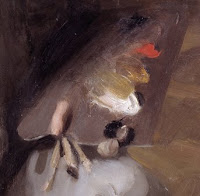Personal preference or taste cannot be a parameter to judge art (good
or bad), especially without the experience of looking at vast types of
artwork. Ability to judge art is a summation of understanding the
techniques employed, culture of a time, experience of ones life,
feelings etc. Art can only be understood objectively - the artist's aim.
Without this understanding, nobody can differentiate between good art and bad art.
Here I must point out
that people generally despise modern art due to lack of understanding of the concept. The viewers do not
understand that the modern art is more to do with instincts and feelings that can only be felt or experienced. It is not representational. That said, a
question can be asked that how many people really even understand
representational art? Do they have enough knowledge to understand the
symbolism in a representational painting? Rembrandt's 'Return of the
Prodigal Son' may look just an ordinary painting to a lot of people
unless they are shown what aspects to look at. However, one must know
that lack of skills cannot be an excuse to get into modern art just
because it looks easier sometimes and leave representational art totally since
there is a problem to handle called the 'likeness' in it. Modern art is not at
all easy. Years go by just to find the most desired style of painting that connect to the senses of both artist and viewer.





